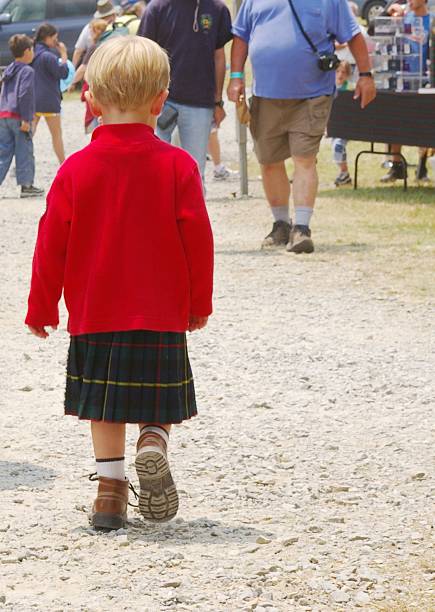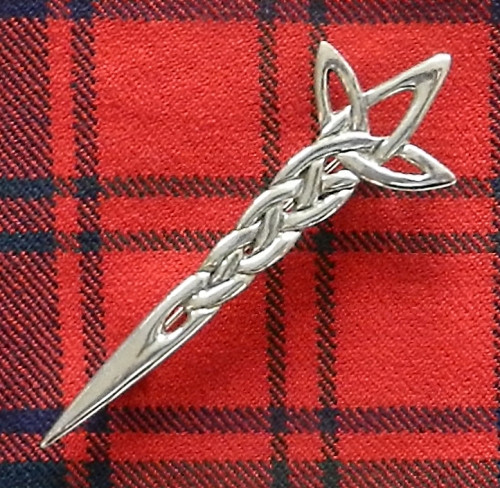Kilt Pins
If you’re a fan of Scottish kilt outfits or traditional Irish clothing, then you’ve likely come across the iconic accessory known as the kilt pin. These small yet significant pieces not only add an extra touch of style to your ensemble but also carry deep symbolism rooted in centuries-old traditions.
In this blog post, we’ll delve into the fascinating world of kilt pins, exploring their history, symbolism, different styles, and how to wear them with pride. So grab your favorite cuppa and let’s embark on this sartorial journey together!
History and Origin of Kilt Pins
The history and origin of kilt pins is a fascinating tale that dates back centuries. While kilts have been worn in Scotland for hundreds of years, it wasn’t until the 19th century that kilt pins became an important accessory.
Originally, kilts were simply fastened with a belt or buckle, but as the design evolved, so did the need for something to keep the front apron in place. This led to the creation of kilt pins, which not only served a practical purpose but also added an element of style and sophistication to the traditional Scottish attire.
The exact origins of kilt pins are somewhat unclear, but they are believed to have become popular during Queen Victoria’s reign in the mid-19th century. It was during this time that Highland dress experienced a resurgence in popularity among both Scots and non-Scots alike.
Kilt pins were initially made from simple materials such as silver or brass and featured basic designs like thistles or Celtic knots. However, over time they have evolved into intricate pieces of jewelry adorned with gemstones and other embellishments.
Today, kilt pins continue to be an integral part of traditional Scottish outfits and are often passed down through generations as family heirlooms. They serve as a symbol of pride in one’s heritage and add a touch of elegance to any kilt ensemble.
In conclusion (while avoiding conclusive phrases), understanding the history and origin of kilt pins helps us appreciate their significance within Scottish culture. These small yet impactful accessories not only hold kilts together but also represent tradition, craftsmanship, and personal style. Whether you’re wearing them for special occasions or everyday wear, kilt pins are timeless symbols that connect individuals with their rich cultural heritage.
Symbolism of Kilt Pins
Kilt pins may seem like simple accessories, but they hold significant symbolism in Scottish and Irish culture. These small yet mighty adornments serve as a representation of heritage, tradition, and pride.
One of the key symbols associated with kilt pins is that of protection. Historically, kilts were worn by warriors on the battlefield, and the pin served as a practical way to secure the garment. It ensured that the kilt would stay in place during intense movements and shielded its wearer from potential wardrobe malfunctions.
Beyond their practicality, kilt pins also carry symbolic meanings unique to each wearer. Some choose designs inspired by their clan or family crests to showcase their lineage and ancestry. Others opt for motifs depicting Celtic knots or thistles – symbols deeply rooted in Scottish and Irish history.
For many wearers, kilt pins are more than just decorative items; they are cherished heirlooms passed down through generations. The sentimental value attached to these pieces further enhances their symbolism, connecting individuals with their ancestors’ traditions and memories.
In contemporary times, kilt pins have become fashion statements too. They allow wearers to express themselves creatively while still honoring cultural heritage. Whether adorned with gemstones or engraved with intricate patterns, modern kilt pins offer endless possibilities for personalization.
When choosing a kilt pin, it’s essential to consider both its aesthetic appeal and its symbolic significance. Opting for a design that resonates with your own values can add an extra layer of meaning behind this accessory – making it not only stylish but deeply meaningful as well.
So next time you don your Scottish or Irish attire complete with a traditional kilt outfit be sure to give special attention to your choice of kilt pin – because beyond being a stylish addition it carries centuries-old symbolism!
Different Styles of Kilt Pins
Kilt pins come in a wide variety of styles, allowing you to add a personal touch to your Scottish kilt outfit. Whether you prefer something traditional or modern, there is a kilt pin out there that will suit your taste.
One popular style of kilt pin is the Celtic design. These pins often feature intricate knotwork patterns, representing the rich history and heritage of Scotland and Ireland. Celtic knots are known for their continuous loops and are believed to symbolize eternal love and loyalty.
For those looking for something more contemporary, there are also kilt pins with unique designs such as thistles, stag heads, or even clan crests. These pins can be customized to reflect your family’s ancestry or simply showcase your individual style.
If you’re attending a formal event or want a more polished look, consider opting for a silver or gold-plated kilt pin. These elegant pieces add an extra touch of sophistication to any ensemble and make for stunning accessories.
Alternatively, if you’re seeking something simpler yet still stylish, there are minimalist kilt pins available as well. These understated designs often feature clean lines and geometric shapes that complement any outfit without overpowering it.
No matter what style you choose, it’s important to select a high-quality kilt pin that will securely fasten your tartan in place while adding flair to your attire. It should be durable enough to withstand regular use yet lightweight enough not to weigh down the fabric.
Remember that when selecting a kilt pin, it’s essential to consider both its aesthetic appeal and practicality—finding the perfect balance between functionality and fashion ensures that you’ll cherish this accessory for years to come!
How to Wear a Kilt Pin
Wearing a kilt pin is an essential part of completing your traditional Scottish or Irish outfit. This small but significant accessory adds both style and functionality to your kilt ensemble. But how exactly should you wear a kilt pin?
First, positioning is key. The kilt pin should be placed on the lower right-hand side of the front apron of your kilt. It’s important not to place it too high or too low, as this can throw off the balance of your entire outfit.
To attach the pin, simply slide it through one layer of fabric on each side of the apron and fasten it securely at the back. Make sure that it sits flat against the fabric without causing any bunching or pulling.
When choosing a kilt pin, consider its weight and design. A heavier pin will stay in place better during movement, while a decorative design adds visual interest to your attire. There are various styles available, from Celtic knots to thistles – choose one that reflects your personal taste and heritage.
Remember that wearing a kilt pin is not just about aesthetics; it also serves a practical purpose. By securing the outer layer of fabric in windy conditions, it prevents embarrassing wardrobe malfunctions!
So next time you don your Scottish or Irish kilt outfit, make sure to add that finishing touch with a carefully chosen and properly positioned kilt pin!
Popular Brands and Designers of Kilt Pins
When it comes to kilt pins, there are several popular brands and designers that have made a name for themselves in the industry. These brands offer high-quality kilt pins that not only serve their practical purpose but also add style and elegance to any Scottish or Irish outfit.
One such brand is Celtic Craftsmen, known for their intricate designs inspired by Celtic motifs. They use traditional craftsmanship techniques to create unique and detailed kilt pins that showcase the rich heritage of Scotland and Ireland.
Another notable brand is Hamilton & Young, who has been producing exceptional kilt pins since 1946. Their designs range from classic tartan patterns to more contemporary styles, making them a favorite among those looking for versatility in their accessories.
For those who appreciate modern aesthetics, MacGregor & MacDuff offers a wide selection of sleek and minimalist kilt pins. Their designs often feature clean lines and understated details, perfect for individuals who prefer a more subtle approach to accessorizing their kilts.
If you’re looking for something truly special, Tain Silver is a brand worth exploring. With an emphasis on quality materials like sterling silver and gold plating, they create exquisite kilt pins adorned with gemstones or enamel accents. Each piece from Tain Silver tells its own story through carefully chosen symbols that reflect the traditions of Scotland.
Whether you prefer traditional or contemporary styles, these popular brands and designers ensure that there’s something for everyone when it comes to selecting the perfect kilt pin. So take your time exploring their collections because finding the right one will add that final touch of flair to your Scottish or Irish ensemble!
Tips for Choosing the Perfect Kilt Pin
- Consider the Size: When choosing a kilt pin, it’s important to consider the size and weight of your kilt. A smaller pin may get lost or go unnoticed on a heavier fabric, while a larger pin can overpower a lighter fabric.
- Match the Design: Look for a kilt pin that complements the design and style of your kilt outfit. If you’re wearing a traditional tartan kilt, opt for a pin with Celtic or Scottish motifs. For an Irish-themed outfit, choose one with shamrocks or Claddagh symbols.
- Pay Attention to Material: Kilt pins are typically made from materials like silver, pewter, or stainless steel. Consider factors such as durability and appearance when selecting the material that best suits your taste and budget.
- Personalize Your Choice: Many brands offer customizable options for kilt pins where you can add initials, family crests, or other personalized details to make it truly unique to you.
- Try It On: Before finalizing your choice, try on the kilt pin with your entire outfit to ensure it sits properly and enhances your overall look without being too distracting.Remember that choosing the perfect kilt pin is about finding one that reflects both your personal style and honors tradition in its design. With these tips in mind, you’ll be sure to find a stunning accessory that adds flair to any Scottish or Irish attire!
Conclusion – Kilt Pins
Kilt pins are a rich symbol of tradition and style in Scottish and Irish culture. With their origins dating back centuries, these small but significant accessories have become an integral part of the traditional kilt outfit. The symbolism behind kilt pins adds depth to the wearer’s heritage, while the various styles available allow for personal expression.
Whether you choose a simple design or something more ornate, wearing a kilt pin is not just about fashion; it signifies respect for tradition and pays homage to Celtic roots. By selecting a kilt pin that resonates with your style, you can add an extra touch of elegance to your Scottish or Irish attire.
When choosing a kilt pin, consider factors such as material, size, and design. Opt for sturdy materials like stainless steel or silver that will withstand regular wear without losing their shine. Additionally, select a size that complements the length and weight of your chosen kilt fabric.
Popular brands like MacCallum Clan Crests and Tartanista offer high-quality kilt pins with unique designs inspired by Celtic motifs. Explore their collections to find one that speaks to your personality and heritage.
In conclusion (oops!), whether you are attending formal events or simply embracing your cultural roots on special occasions, don’t forget to adorn your traditional Scottish or Irish clothing with a well-chosen kilt pin. It’s not just an accessory; it’s an emblem of pride in your heritage! So go ahead – express yourself through this small yet powerful detail!
Remember: Your authentic sense of style combined with the symbolic significance of the kilt pin will surely make heads turn wherever you go in your Scottish or Irish ensemble!









